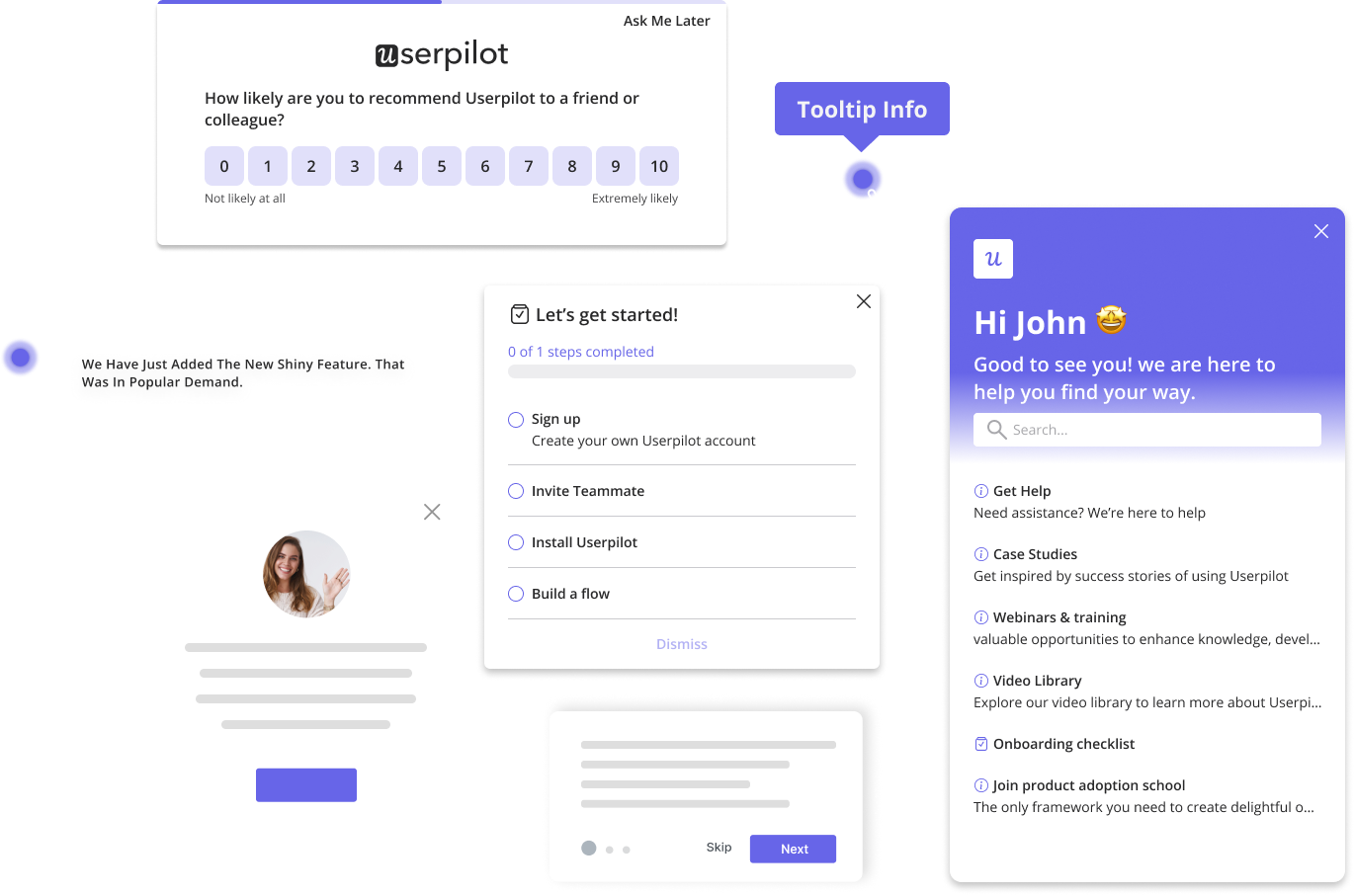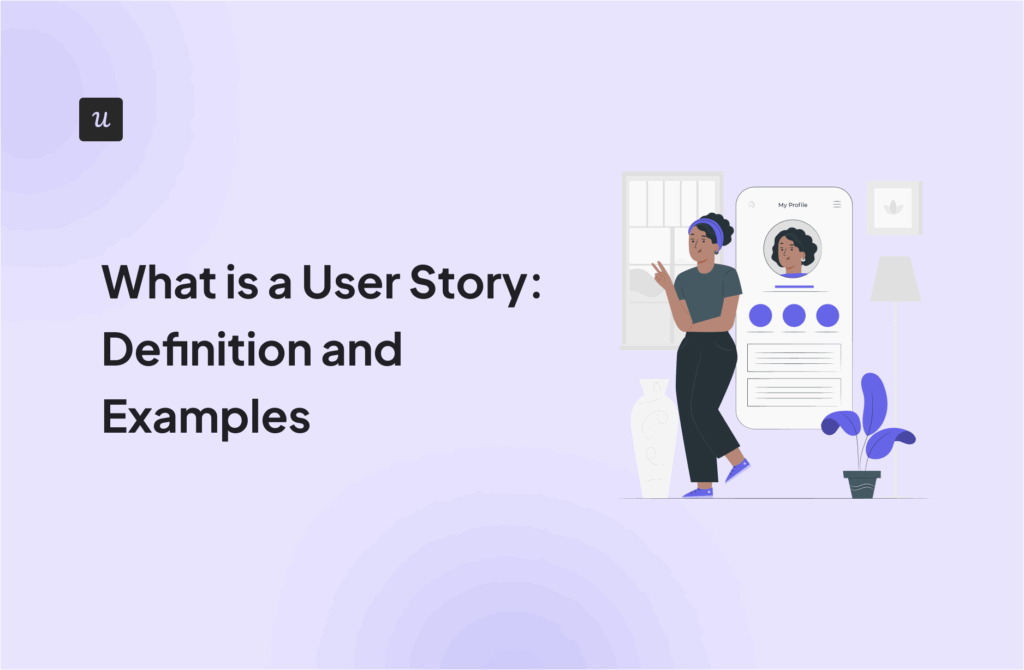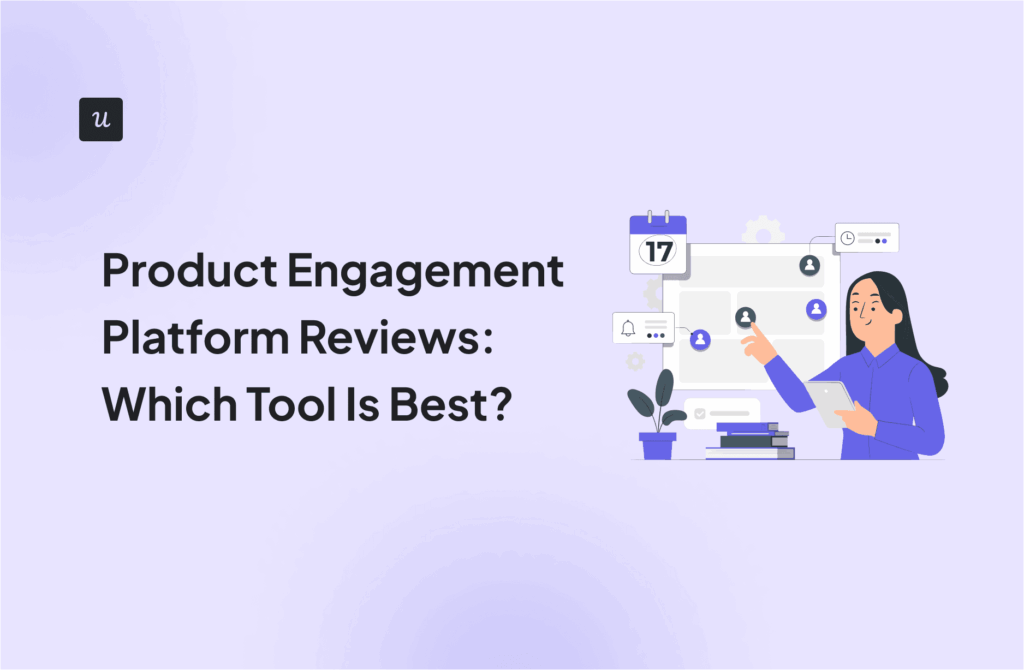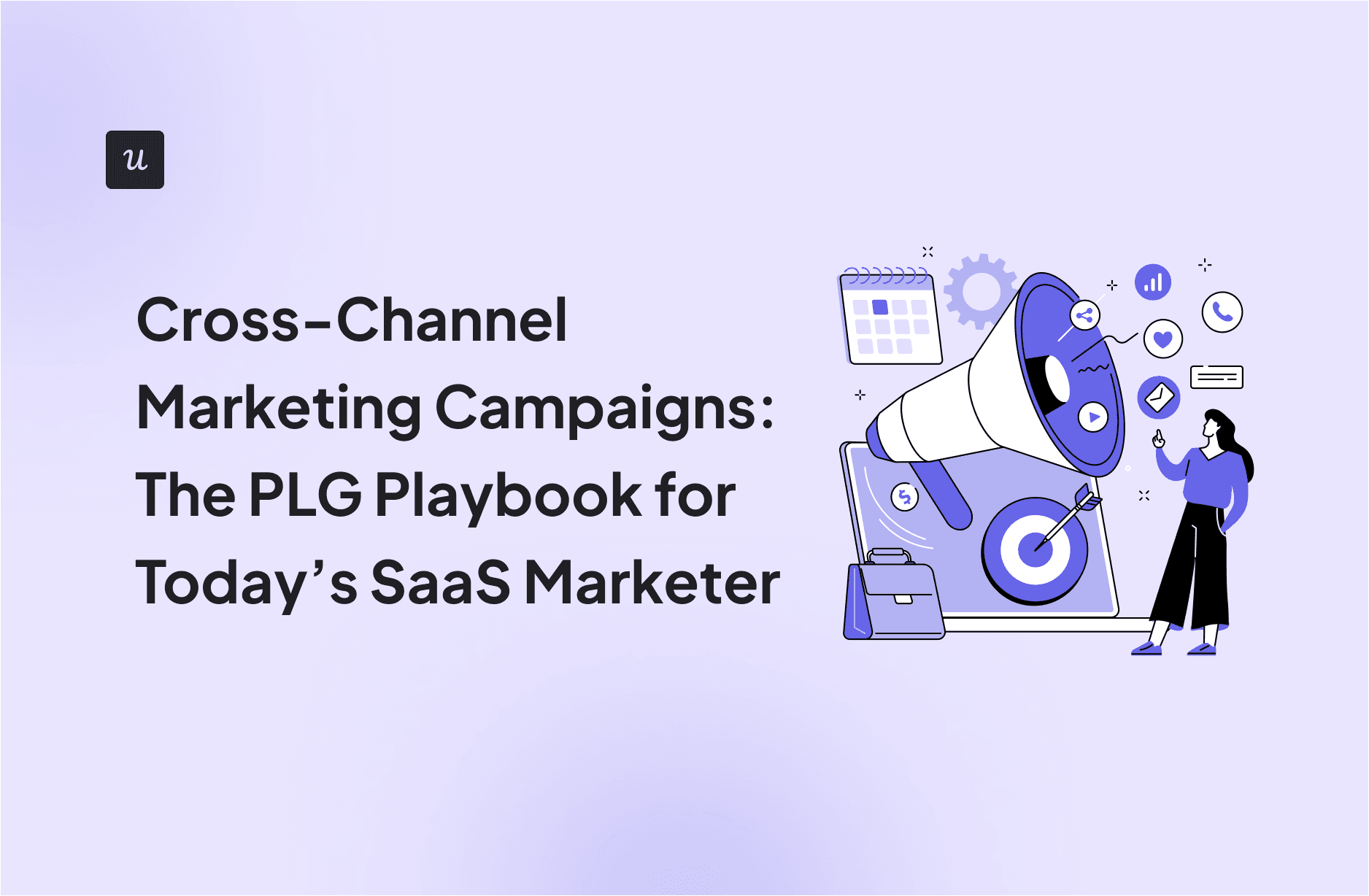
Cross-Channel Marketing Campaigns: The PLG Playbook for Today’s SaaS Marketer
Your cross-channel marketing campaigns are confusing your users. A customer sees a feature announcement in-app, but never receives the email context. Another gets a lifecycle campaign before exploring your core feature. Sound familiar?
These disconnected touchpoints don’t just create confusion; they destroy trust. Users expect seamless, integrated experiences, but most teams are stuck juggling isolated tools that can’t talk to each other. Every misaligned message pushes users further from activation, and you’re left wondering why your retention numbers keep dropping despite all your marketing efforts.
The solution isn’t launching more messages: it’s making them work together. In this guide, I’m sharing the exact framework I use to build cross-channel campaigns that actually match user behavior inside your product. You’ll learn how to increase product engagement, follow a proven step-by-step process, and increase engagement across multiple touchpoints without the chaos of disconnected tools.
Try Userpilot Now
See Why 1,000+ Teams Choose Userpilot
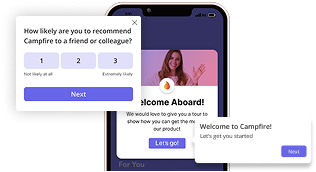
Why “multichannel” doesn’t cut it anymore
Multichannel marketing means showing up across multiple channels such as email, push, and digital ads, but these platforms rarely talk to each other, creating disconnected customer experiences.
The customer data stays fragmented, and messages feel out of step with what users are doing. Someone might finish onboarding inside the app, but still get nudged about setup through email. These types of gaps break the customer journey and negatively impact customer experience.
That’s why cross-channel marketing works better. It brings your marketing channels into one shared flow. If someone takes action in your product, every channel follows that lead, creating an omnichannel experience that complements one another.
Why cross-channel marketing is a game changer for SaaS (especially for PLG!)
Here’s how cross-channel marketing plays out in practice.
- Builds trust and brand awareness: Consistency builds trust. When our message, tone, and visual identity remain the same across every touchpoint, users get a clear sense of who we are. This consistency also dramatically boosts customer loyalty.
- Helps understand your customers better: By connecting data from all channels, we get a full, rich picture of user behavior. We see which channels they prefer, what content sparks their interest, and where they might get stuck. This deep dive into user behavior helps us truly understand our audience. These patterns also help you identify trends and refine your marketing strategy based on real user behavior.
- Increases ROI and long-term growth: Instead of running isolated campaigns, coordinated cross-channel marketing lets you tie everything back to a single customer journey touchpoint. This allows us to tailor messages and offers with precision, leading to better conversion rates and a higher product experience overall. It truly maximizes our marketing spend.
- Personalizes at scale without breaking things: Unified customer data platforms let you send personalized messages that reflect where someone is in the product and help them through their journey. For instance, when someone discovers a feature in-app, you can automatically trigger an email with a how-to guide or an invite to a webinar.
Common cross-channel challenges and how we tackle them
Cross-channel marketing sounds great in theory until you try to set it up. I’ve run into messy data, disconnected tools, and campaigns that just don’t line up. These issues slow things down and break the experience. But they’re solvable.
Fragmented data quality
Most cross-channel marketing campaign problems start with scattered data. Your CRM stores one thing, your email tool shows another, and your product analytics don’t sync up with either.
This leads to delays and mistakes, such as sending a discount to someone who’s already converted or triggering an email before the in-app message appears. These gaps hurt the customer experience.
We fixed this by switching to a product experience platform with built-in customer data integration. It connects email, in-app, and mobile channels in one place. We can see real-time events, group them by behavior, and trigger the right message at the right time. This keeps the journey smooth and the messages relevant, no matter where customers interact with us.
Choosing the right tech
Too many separate tools can make cross-channel marketing chaotic. One handles transactional emails, another manages mobile, and neither has proper integration. That means you might send a welcome email without knowing if someone has already finished onboarding, or post on social media channels without any follow-up in-app.
This is why we moved to a platform where all our campaigns, like email, in-app, and push, are managed in one place. It’s easier to sync messaging, trigger automated email flows based on behavior, and handle customer data integration without constant back-and-forth between tools.

Maintaining consistency
Consistency across channels doesn’t mean copying the exact message everywhere. Each channel has its tone, format, and timing. An in-app message needs to be short and contextual. A transactional email should offer more detail. Push notifications have to grab attention quickly.
When we launched a feature update, we kept the message aligned without sounding repetitive:
- A targeted email shared what changed, with a clear subject line and sender name.
- A short tooltip inside the app pointed to the updated feature.
- A mobile push followed up for inactive customers with one line and a CTA.
Tracking metrics
You can’t improve what you can’t see. And with messages going out across in-app, mobile, and email, it’s easy to lose track of what’s actually working. One channel might show great open rates, but does it lead to activation? Are your welcome emails driving engagement or just sitting unread?
Userpilot’s product analytics brings it all together. You can track how each channel performs across the same goal, whether it’s feature adoption, onboarding completion, or customer engagement. It connects the dots, so you’re not guessing which message or channel is moving the needle.
Userpilot is very customizable and has so many options. There has not been one time where I thought to myself “I wish they had this option.” They have seriously thought through all of the different needs their customers could ever need or want. It’s very user friendly and theanalyticsare top notch! Their integration options are super helpful too.
– G2 user
My 8-step blueprint for crafting winning cross-channel campaigns
This is the cross-channel marketing strategy I follow to keep things focused, consistent, and results-driven across every channel.
Step 1: Unify your data
Your product generates user behavior signals across every touchpoint: feature clicks, page visits, email opens, and support requests. Without connecting these data points, you’re flying blind on what drives activation and retention.
A customer data platform creates a unified user profile that tracks the complete product journey, from anonymous visitor to power user. This means you can see exactly which in-app actions correlate with email engagement, or which onboarding steps predict long-term retention.
With Userpilot, you can see what each segment does, where they drop off, and what actually drives action.
Step 2: Segment your audience
Once your data is clean, break it into meaningful segments. Focus on where they are in the customer journey, what they’ve done in the product, or which features they haven’t touched.
A strong customer segmentation strategy helps you send targeted messages across different channels without relying on guesswork.

Userpilot lets you create these segments without code. It tracks product behavior, lifecycle stage, and custom events. You can then plug these segments into your cross-channel marketing flows without needing customer data platforms to stitch everything together.

Step 3: Pick the right channels
Once you’ve nailed your segments, the next step is choosing where to reach them.
Knowing your segments helps you pick the best places to reach them. Do our new users respond better to emails or in-app guidance? Are our enterprise customers more likely to engage with a personalized demo or an interactive walkthrough?
Userpilot helps you run this kind of cross-channel marketing process. You can build and test flows across different channels, email, in-app, and push and track which ones move people forward.

Step 4: Start small with micro-funnels
I don’t recommend starting with a full cross-channel campaign. Pick a simple journey, like announcing a new feature or sending an onboarding nudge, and begin with one in-product message.
This way, the scope stays small and the data stays clean. You’ll see where people drop off and which segments are worth focusing on. Once the small funnel works, you’ll know where to go next.
Step 5: Test and learn
Growth experimentation starts with small changes. I try different messages, timings, and formats across various marketing channels to see what clicks with my target audience.
I track how users move through interactive user guides like where they pause, drop off, or skip, and adjust from there.
My goal is always the same: understand how my target audience behaves, then keep adjusting until the message sticks.

Step 6: Scale what works
When a micro-campaign performs well, I treat it as a signal to scale. The actionable insights help shape broader cross-channel marketing campaigns across multiple platforms. Tools like Userpilot help me scale fast without losing context.
I adapt the messaging, keep the timing relevant, and repurpose what worked. This way, you can also turn a simple test into qualified cross-channel marketing leads.
Step 7: Keep an eye on performance
You can’t improve what you’re not measuring. Keep an eye on your product metrics and how each channel performs.
Use user engagement analysis to see how people interact with your successful campaigns. It shows you where they drop off or stay engaged. I’ve found that even small delays or mismatched copy can hurt engagement.

Step 8: Always be iterating
Cross-channel marketing isn’t static. Your audience, channels, and behavior keep changing, so your campaigns should too. Keep tweaking your strategy, message, and timing based on what you learn. That’s how you stay relevant and build an effective marketing strategy.
Benefits of cross-channel marketing campaigns
Let me show you where cross-channel campaigns matter most inside a product-led motion.
- Reducing churn: When you use multiple marketing channels to stay in touch, you can spot when someone is slipping away and respond early. A cross-channel marketing strategy enables you to send helpful nudges, such as reminder emails, in-app tips, or push messages.
It helps to re-engage them before they drop off. With proper cross-channel campaign management, these messages feel connected and timely. That makes it easier to keep people active and reduce churn. - Driving feature adoption: Feature adoption doesn’t happen in one step. People often need a few reminders before they explore something new. Multi-channel marketing makes it possible to place those reminders where they naturally fit.
- Upselling and cross-selling: As users gain value, we look for opportunities to introduce them to more advanced features or higher plans. This could be through personalized upselling examples in-app based on their usage patterns or targeted email campaigns showing how a premium feature solves a specific need they’ve demonstrated.
Conclusion
Cross-channel marketing isn’t just about being everywhere; it’s about being everywhere with purpose. When your in-app messages, emails, and push notifications work together instead of against each other, you create the seamless product experience users expect.
The framework I’ve shared here transforms scattered touchpoints into a unified journey that guides users from activation to retention.
Ready to build cross-channel campaigns that actually work together?
See how Userpilot unifies in-app messaging, email, and mobile push in one platform. Book a demo to discover how product teams are increasing engagement and reducing churn with connected campaigns that follow user behavior, not guesswork.
FAQ
What is an example of a cross-channel marketing campaign?
One of the most common cross-channel marketing examples is a product launch. A SaaS company might start by sending an email about a new feature. Then they show an in-app message to active customers. For people who haven’t logged in recently, they might run a LinkedIn ad. All of these touchpoints are connected. The goal is to guide people toward trying the new feature through different channels.
What is an example of cross-media marketing?
An example of cross-media marketing is promoting a new product using both print and digital channels. A brand might publish a blog post, share a launch video on YouTube, and post about it on social media. This mix helps create a seamless experience.
What is cross-channel in digital marketing?
Cross-channel in digital marketing refers to using multiple social channels to guide someone through a journey. That could include email, push notifications, in-app messages, and paid ads. The goal is a seamless transition between channels so the customer interaction feels smooth and connected.
What is an example of cross-screen marketing?
An example of cross-screen marketing is showing a product ad on someone’s smart TV, then following up with the same ad on their phone or laptop. The message stays consistent as they move between devices. This cross-channel approach helps build familiarity and keeps the brand top of mind.

